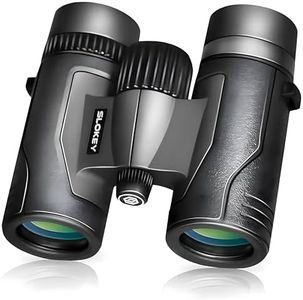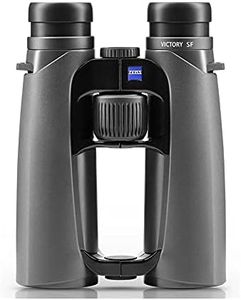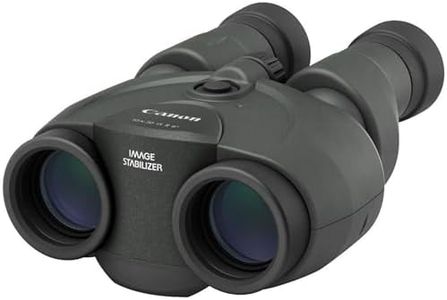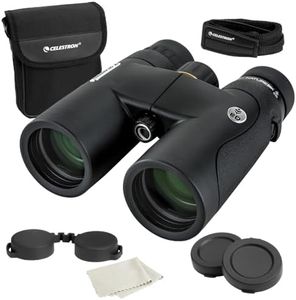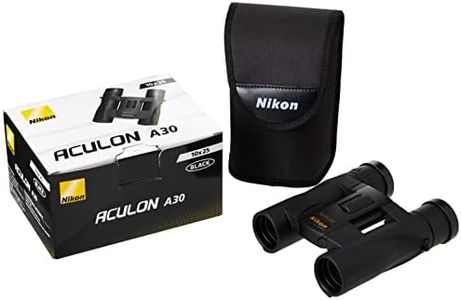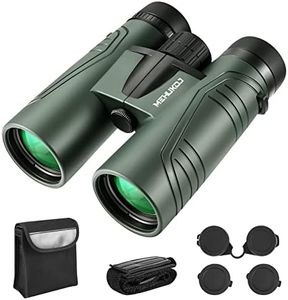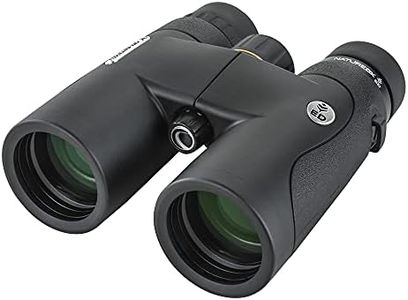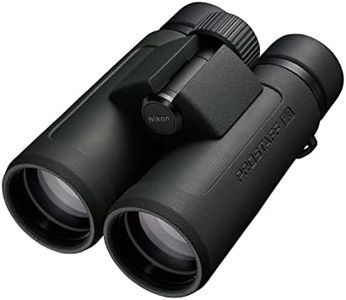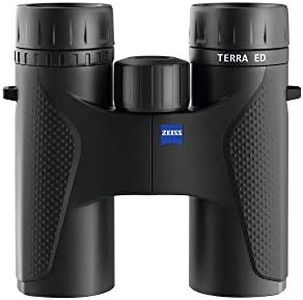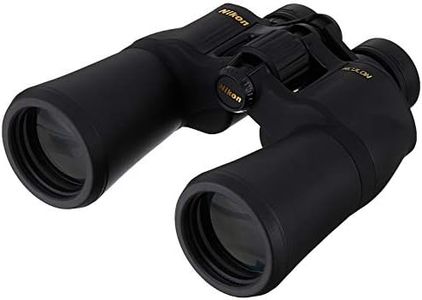We Use CookiesWe use cookies to enhance the security, performance,
functionality and for analytical and promotional activities. By continuing to browse this site you
are agreeing to our privacy policy
10 Best Birding Binoculars
From leading brands and best sellers available on the web.Buying Guide for the Best Birding Binoculars
Choosing the right birding binoculars can greatly enhance your bird-watching experience. The right pair will allow you to see birds clearly and comfortably, even from a distance. When selecting binoculars, consider factors such as magnification, objective lens diameter, field of view, and weight. These specifications will help you determine how well you can see birds, how much detail you can observe, and how comfortable the binoculars will be to use over extended periods.MagnificationMagnification refers to how much closer the binoculars can make an object appear. For birding, a magnification of 8x or 10x is generally recommended. 8x magnification provides a wider field of view, which is helpful for spotting birds quickly and following them in flight. 10x magnification offers more detail but can be harder to stabilize and may have a narrower field of view. Choose 8x if you prefer a wider view and easier handling, or 10x if you want to see more detail and are comfortable with a steadier hand.
Objective Lens DiameterThe objective lens diameter, measured in millimeters, determines how much light the binoculars can gather. Larger diameters, such as 42mm, allow more light, resulting in brighter images, especially in low-light conditions like dawn or dusk. However, larger lenses can make binoculars heavier. A common choice for birding is 42mm, balancing brightness and weight. If you prioritize portability and will mostly bird-watch in good lighting, a smaller diameter like 32mm might suffice.
Field of ViewField of view is the width of the area visible through the binoculars at a specific distance, usually measured in feet at 1,000 yards. A wider field of view makes it easier to locate and track birds, especially those in motion. Binoculars with a field of view of 350 feet or more are considered good for birding. If you often watch fast-moving birds or scan large areas, prioritize a wider field of view. For stationary or perched birds, a narrower field might be acceptable.
WeightThe weight of binoculars affects how comfortable they are to use for extended periods. Heavier binoculars can cause fatigue, especially if you're holding them up for long periods. Lightweight models are easier to carry and handle, making them ideal for long birding sessions or hikes. Consider how long you typically spend bird-watching and whether you prioritize portability. If you often bird-watch for hours or travel frequently, opt for lighter binoculars.
Eye ReliefEye relief is the distance from the eyepiece to your eye while still seeing the full field of view. This is particularly important for eyeglass wearers, as insufficient eye relief can make it difficult to see the entire image. Look for binoculars with at least 15mm of eye relief if you wear glasses. If you don't wear glasses, eye relief is less critical, but longer eye relief can still enhance comfort during extended use.
Close FocusClose focus is the shortest distance at which binoculars can focus on an object. For birders, a close focus of 6 feet or less is ideal, allowing you to observe nearby birds or insects in detail. If you enjoy watching birds at feeders or observing butterflies and other small wildlife, prioritize binoculars with a good close focus capability. If your primary interest is distant birds, close focus may be less important.
